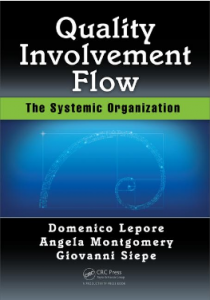A business leader recently asked us about quantifying the business value of a systemic approach to management. This is someone who completely understands that it makes much more sense to work in an integrated and collaborative way rather than within a “functional empire”. The question was, what can we say to people about the quantifiable business benefits to persuade them?
It’s a very appropriate point and one that we sometimes don’t emphasize enough. This is simply because after 20 years of working with a systemic approach we tend to take for granted that the business value is obvious, given that this value is so intrinsic to the approach.
Discovering extra capacity through your constraint
There is no doubt that silo thinking and behaviours lead to waste. This is inevitable because the artificial barriers that silos create in a traditional functional/hierarchical organization impede flow. That impeded flow can be in communication, processes, delivery of projects and, ultimately, revenue. It can lead to unnecessary repetition of work that could be more effectively streamlined. It also takes an emotional toll which leads to lost energy and enthusiasm.
Simply by introducing Drum, Buffer, Rope from the Theory of Constraints, identifying a physical constraint and subordinating to that constraint, an organization will gain at least 30% capacity without added investments. This alone is a huge result.
Resource optimization
The traditional, non-systemic approach is to demand maximum “efficiency” from all parts of a production process whilst trying to be effective within the market. This often leads to an accumulation of work in progress between the various production phases, tying up capital that could be used for other purposes, and causes production to be constantly out of synch with the market, which is therefore inadequately supplied.
By going through the focusing process that identifying the constraint implies, it becomes evident where redundancies in activities exist and where processes can be improved to increase the flow of throughput.
In our approach, resource optimization is a natural by-product. The only part of the production process that needs to have 100% efficiency is the constraint. Every other area will be sub-optimized and its excess capacity serves, on the one hand, as protection for the constraint, and on the other as an opportunity should we be able to find a market for this excess capacity.
Quality, Involvement, Flow
The process of identifying and subordinating to a well chosen constraint inherently improves the Quality of what is produced, increases the involvement of people, and accelerates flow, including generation of cash. All of these factors will directly impact the economic performance of the company.
Then the question becomes whether the constraint is internal or external, i.e. market demand exceeds the capacity to satisfy it. The Theory of Constraints has a precise, systematic and systemic approach to marketing and sales that leads to increased sales and revenue. It’s called External Constraint.
Sign up to our blog here and shift your thinking towards broader, systemic possibilities for yourself and your organization. Intelligent Management provides education and training on W. Edwards Deming’s management philosophy and the Theory of Constraints (Decalogue methodology) in North America and Europe.
About the Author
Angela Montgomery Ph.D. is Partner and Co-founder of Intelligent Management and author of the business novel+ website The Human Constraint . This downloadable novel uses narrative to look at how the Deming approach and the Theory of Constraints can create the organization of the future, based on collaboration, network and social innovation. She is co-author with Dr. Domenico Lepore, founder, and Dr. Giovanni Siepe of ‘Quality, Involvement, Flow: The Systemic Organization’ from CRC Press, New York.








Leave a Reply